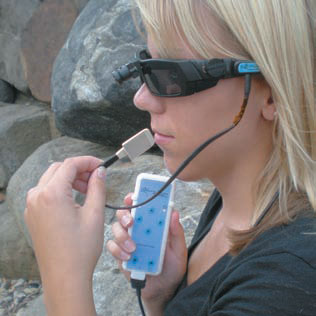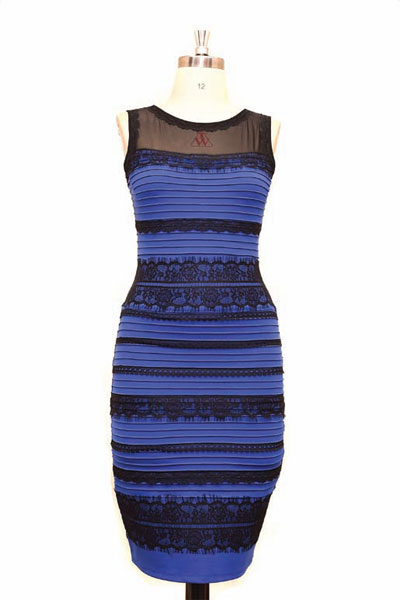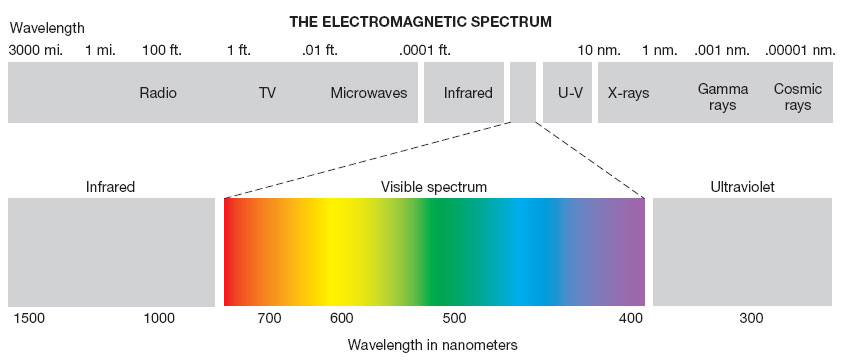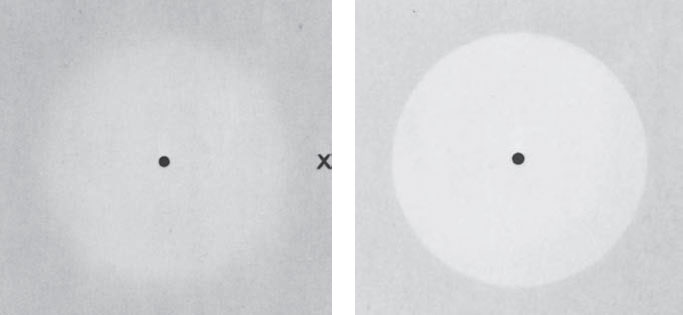6.1
Our Sensational Senses
At some point, you probably learned that we have five senses: vision, hearing, taste, touch, and smell. Actually, we have more than five senses. The skin, which is the organ of touch or pressure, also senses heat, cold, and pain, not to mention itching and tickling. The ear, which is the organ of hearing, also contains receptors that account for a sense of balance. The skeletal muscles contain receptors responsible for a sense of bodily movement.
All of our senses evolved to help us survive. Even pain, which causes so much human misery, is an indispensable part of our evolutionary heritage, for it alerts us to illness and injury. Some people are born with a rare condition that prevents them from feeling the usual hurts and aches of life, but you shouldn't envy them: They are susceptible to burns, bruises, and broken bones, and they often die at an early age because they can't take advantage of pain's warning signals. In this section we will examine the basics of how sensation takes place, from the painful jab of a wasp sting to the breathtaking vision of a glorious sunset. Before we get started, watch the video Sensation and Perception to learn more about how our senses allow us to experience the world.
Watch
Sensation and Perception
The Riddle of Separate Sensations
Sensation is the detection of physical energy emitted or reflected by physical objects. The cells that do the detecting are located in the sense organs—the eyes, ears, tongue, nose, skin, and internal body tissues. In contrast, perception refers to a set of mental operations that organizes sensory impulses into meaningful patterns.
Sensation begins with the sense receptors, cells located in the sense organs. The receptors for smell, pressure, pain, and temperature are extensions (dendrites) of sensory neurons. The receptors for vision, hearing, and taste are specialized cells separated from sensory neurons by synapses.
When the sense receptors detect an appropriate stimulus—light, mechanical pressure, or chemical molecules—they convert the energy of the stimulus into electrical impulses that travel along nerves to the brain. Sense receptors are like military scouts who scan the terrain for signs of activity. These scouts cannot make many decisions on their own: They must transmit what they learn to “field officers,” sensory neurons in the nerves of the peripheral nervous system. The field officers in turn must report to generals at a command center, the cells of the brain. The generals are responsible for analyzing the reports, combining information brought in by different scouts, and deciding what it all means. Figure6.1 illustrates this process.
Figure6.1
The General Process of Sensation
The sensory-neuron “field officers” all use the same form of communication: a neural impulse. It is as if they must all send their messages on a bongo drum and can only go “boom.” How, then, are we able to experience so many different kinds of sensations? The answer is that the nervous system encodes the messages. One kind of code, anatomical code, was first described in 1826 by German physiologist Johannes Müller in his doctrine of specific nerve energies. According to this doctrine, different sensory modalities (such as vision and hearing) exist because signals received by the sense organs stimulate different nerve pathways leading to different areas of the brain. Signals from the eye cause impulses to travel along the optic nerve to the visual cortex. Signals from the ear cause impulses to travel along the auditory nerve to the auditory cortex. Light and sound waves produce different sensations because of these anatomical differences.
The doctrine of specific nerve energies implies that what we know about the world ultimately reduces to what we know about the state of our own nervous system: We see with the brain, not the eyes, and we hear with the brain, not the ears. It follows that if sound waves could stimulate nerves that end in the visual part of the brain, we would “see” sound. In fact, a similar sort of crossover does occur if you close your right eye and press lightly on the right side of the lid: You will see a flash of light seemingly coming from one left. The pressure produces an impulse that travels up the optic nerve to the visual area in the right side of the brain, where it is interpreted as coming from the left side of the visual field. By taking advantage of such crossover from one sense to another, researchers hope to enable blind people to see by teaching them to interpret impulses from other senses that are then routed to the visual areas of the brain. Neuroscientists have developed a device that translates images from a camera into a pattern of electronic pulses that is sent to electrodes on the tongue, which in turn sends information about the pattern to visual areas of the brain that process images (Chebat et al., 2011; Proulx, Ptito, & Amedi, 2014). Using this device, congenitally blind people have been able to make out shapes, and their visual areas, long quiet, have suddenly become active.

This experimental device, which sends signals from the tongue to visual brain areas, has enabled blind people to make out some shapes—an example of sensory crossover applied to a real-life problem.
Sensory crossover also occurs in a rare condition called synesthesia, in which the stimulation of one sense also consistently evokes a sensation in another. A person with synesthesia may say that the color purple smells like a rose, the aroma of cinnamon feels like velvet, or the sound of a note on a clarinet tastes like cherries. In its most common form, people experience certain colors when they see specific letters or numbers. Most synesthetes are born with the condition, but it can also result from damage to the brain. One woman who had recovered from a stroke experienced sounds as a tingling sensation on the left side of her body (Ro et al., 2007).
No one is certain yet about the neurological basis of synesthesia. A leading theory holds that synesthetes have a greater number of neural connections between different sensory brain areas than other people do (Bargary & Mitchell, 2008; Rouw & Scholte, 2007; Xu et al., 2015). Interestingly, areas associated with the “extra” sensations seem to be far more sensitive in synesthetes than in other people. Ordinary people tend to see brief flashes of light when their visual cortex is stimulated by transcranial magnetic stimulation, but synesthetes who see numbers or letters in color need only a third of the stimulation to see the flashes (Terhune et al., 2011). It may be that this greater neural responsiveness somehow helps to produce extra connections between brain areas. Yet another possibility is that the condition results from a lack of normal disinhibition in signals between different sensory areas (Hale et al., 2014).
Synesthesia, however, is an anomaly; for most of us, the senses remain separate. Anatomical encoding does not completely solve the riddle of why this is so, nor does it explain variations of experience within a particular sense—the sight of pink versus red, the sound of a piccolo versus the sound of a tuba, or the feel of a pinprick versus the feel of a kiss. An additional kind of code is therefore necessary. This second kind of code has been called functional. Functional codes rely on the fact that sensory receptors and neurons fire, or are inhibited from firing, only in the presence of specific sorts of stimuli. At any particular time, then, some cells in the nervous system are firing and some are not. Information about which cells are firing, how many cells are firing, the rate at which cells are firing, and the patterning of each cell's firing forms a functional code. Functional encoding may occur all along a sensory route, starting in the sense organs and ending in the brain.

A popular “stumper” circulated on the Internet recently: What color is this dress? Some people saw it as white and gold, whereas others saw it as blue and brown. The amount and type of lighting available when we perceive this object can “fool” our visual system into believing one conclusion or the other. (The dress is actually blue and black, by the way.)
Measuring the Senses
Just how sensitive are our senses? The answer comes from the field of psychophysics, which is concerned with how the physical properties of stimuli are related to our psychological experience of them. Drawing on principles from both physics and psychology, psychophysicists have studied how the strength or intensity of a stimulus affects the strength of sensation in an observer.
Absolute Thresholds One way to find out how sensitive the senses are is to show people a series of signals that vary in intensity and ask them to say which signals they can detect. The smallest amount of energy that a person can detect reliably is known as the absolute threshold. However, the word absolute is a bit misleading because people detect borderline signals on some occasions and miss them on others. Reliable detection is said to occur when a person can detect a signal 50 percent of the time.
If your absolute threshold for brightness were being measured, you might be asked to sit in a dark room and look at a wall or screen. You would then be shown flashes of light varying in brightness, one flash at a time. Your task would be to say whether you noticed a flash. Some flashes you would never see. Some you would always see. And sometimes you would miss seeing a flash, even though you had noticed one of equal brightness on other trials. Such errors seem to occur in part because of random firing of cells in the nervous system, which produces fluctuating background noise, something like the static in a radio transmission that is slightly out of range.
By studying absolute thresholds, psychologists have found that our senses are very sharp indeed. If you have normal sensory abilities, you can see a candle flame on a clear, dark night from 30 miles away. You can also taste a teaspoon of sugar diluted in two gallons of water, smell a drop of perfume diffused through a three-room apartment, and feel the wing of a bee falling on your cheek from a height of only one centimeter (Galanter, 1962).
Despite these impressive skills, our senses are tuned in to only a narrow band of physical energies. We are visually sensitive to only a tiny fraction of the electromagnetic energy that surrounds us; we do not see radio waves, infrared waves, or microwaves (see Figure6.2).
Figure 6.2
The Visible Spectrum of Electromagnetic Energy

Our visual system detects only a small fraction of the electromagnetic energy around us.
Many other species can pick up auditory and visual signals that we cannot. Dogs can detect high-frequency sound waves that are beyond our range, as you know if you have ever called yours with a “silent” doggie whistle. Bees can see ultraviolet light, which merely gives human beings a sunburn. Watch The Visible Spectrum to learn more about the energy our eyes detect.
Watch
The Visible Spectrum

Different species sense the world differently. The flower on the left was photographed under normal light. The one on the right, photographed under ultraviolet light, is what a butterfly might see because butterflies have ultraviolet receptors. The hundreds of tiny bright spots are sources of nectar.
Difference Thresholds Suppose you're in the gym, pressing a barbell loaded with 100 pounds overhead, and one of your troublemaking friends adds weight to it when you are not looking. What is the smallest amount of weight she can add before you think to yourself, “Hey, wait a minute . . . this bar feels heavier”? If you and your friend tried to answer this question systematically, you would probably determine that the answer is another 2 pounds. In other words, 2 pounds is the smallest difference in the weight of the two barbells that you would reliably detect. (Again, “reliably” means half of the time.) Scientists call this point the difference threshold or just noticeable difference(jnd).
Now suppose that after you lift a small 1-pound dumbbell overhead, your friend tries the same prank. Could she add 2 pounds to that little dumbbell before you would notice? Unlikely—that would triple the weight of the dumbbell. And here is where the interesting aspect of jnd comes in, thanks to 19th-century German scientist Ernst Weber. He determined that for people to detect a difference between two stimuli, such as two weights, those stimuli must differ by a certain fixed proportion (e.g., 2 percent), not a certain amount (e.g., 2 pounds or 2 ounces). Different properties of stimuli have their own constant percentage: For two weights, it is 2 percent; for the brightness of two lights or the saltiness of two liquids, it is 8 percent; and for the loudness of two noises, it is 5 percent.
Weber's Law

Signal-Detection Theory Despite their usefulness, the procedures we have described have a serious limitation. Measurements for any given person may be affected by that person's general tendency, when uncertain, to respond, “Yes, I noticed a signal (or a difference)” or “No, I didn't notice anything.” Some people are habitual yea-sayers, willing to gamble that the signal was there. Others are habitual naysayers, cautious and conservative. In addition, alertness, motives, and expectations can influence how a person responds on any given occasion. If you are in the shower and you are expecting an important call, you may think you hear the telephone ring when it did not. In laboratory studies, when observers want to impress the experimenter, they may lean toward a positive response.
Fortunately, these problems of response bias are not insurmountable. According to signal-detection theory, an observer's response in a detection task can be divided into a sensory process, which depends on the intensity of the stimulus, and a decision process, which is influenced by the observer's response bias (Tanner & Swets, 1954). One way a researcher can separate these two components is by including some trials in which no stimulus is present and others in which a weak stimulus is present. Under these conditions, four kinds of responses are possible: The person (1) detects a signal that was present (a “hit”), (2) says the signal was there when it wasn't (a “false alarm”), (3) fails to detect the signal when it was present (a “miss”), or (4) correctly says that the signal was absent when it was absent (a “correct rejection”).
Yea-sayers will have more hits than naysayers because they are quick to say “it was there” when it really was, but they will also have more false alarms because they are similarly quick to say “it was there” when it wasn't. Naysayers will have more correct rejections than yea-sayers, but they will also have more misses because they will often say “Nope, nothing was there” when in fact it was. This information can be fed into a mathematical formula that yields separate estimates of a person's response bias and sensory capacity. Each person's true sensitivity to a signal of any particular intensity can then be predicted.
The original method of measuring thresholds assumed that a person's ability to detect a stimulus depended solely on the stimulus. Signal-detection theory assumes that there is no single threshold because at any given moment a person's sensitivity to a stimulus depends on a decision that he or she actively makes. Signal-detection methods have many real-world applications, from screening applicants for jobs that require keen hearing to training air-traffic controllers, whose decisions about the presence or absence of a blip on a radar screen may mean the difference between life and death.
Sensory Adaptation
Variety, they say, is the spice of life. It is also the essence of sensation, for our senses are designed to respond to change and contrast in the environment. When a stimulus is unchanging or repetitious, sensation often fades or disappears. Receptors or nerve cells higher up in the sensory system get “tired” and fire less frequently. The resulting decline in sensory responsiveness is called sensory adaptation. Usually, such adaptation spares us from having to respond to unimportant information; most of the time, you have no need to feel your watch sitting on your wrist. Sometimes, however, adaptation can be hazardous, as when you no longer smell a gas leak that you thought you noticed when you first entered the kitchen.
We never completely adapt to extremely intense stimuli—a terrible toothache, the odor of ammonia, the heat of the desert sun. And we rarely adapt completely to visual stimuli, whether they are weak or intense. Eye movements, voluntary and involuntary, cause the location of an object's image on the back of the eye to keep changing, so visual receptors do not have a chance to “fatigue.”

Sensation depends on change and contrast in the environment. Hold your hand over one eye and stare at the dot in the middle of the circle on the right. You should have no trouble maintaining an image of the circle. However, if you do the same with the circle on the left, the image will fade. The gradual change from light to dark does not provide enough contrast to keep your visual receptors firing at a steady rate. The circle reappears only if you close and reopen your eye or shift your gaze to the X.
What would happen if our senses adapted to most incoming stimuli? Would we sense nothing, or would the brain substitute its own images for the sensory experiences no longer available by way of the sense organs? In early studies of sensory deprivation, researchers studied this question by isolating male volunteers from all patterned sight and sound. Vision was restricted by a translucent visor, hearing by a U-shaped pillow and noise from an air conditioner and fan, and touch by cotton gloves and cardboard cuffs. The volunteers took brief breaks to eat and use the bathroom, but otherwise they lay in bed, doing nothing. The results were dramatic. Within a few hours, many of the men felt edgy. Some were so disoriented that they quit the study the first day. Those who stayed longer became confused, restless, and grouchy. Many reported bizarre visions, such as a squadron of squirrels or a procession of marching eyeglasses. It was as though they were having the kind of waking dreams. Few people were willing to remain in the study for more than 2 or 3 days (Heron, 1957).
But the notion that sensory deprivation is unpleasant or even dangerous turned out to be an oversimplification (Suedfeld, 1975). Later research, using better methods, showed that hallucinations are less frequent and less disorienting than had first been thought. Many people enjoy limited periods of deprivation, and some perceptual and intellectual abilities actually improve. Your response to sensory deprivation depends on your expectations and interpretations of what is happening. Reduced sensation can be scary if you are locked in a room for an indefinite period, but relaxing if you have retreated to that room voluntarily for a little time out—at, say, a luxury spa or a monastery.
Nonetheless the human brain does require a minimum amount of sensory stimulation to function normally. This need may help explain why people who live alone often keep the radio or television on continuously, and why prolonged solitary confinement is used as a form of punishment or even torture.
Sensing without Perceiving
If sensory deprivation can sometimes be upsetting, so can sensory overload. Fortunately, our capacity for selective attention—the ability to focus on some parts of the environment and block out others—protects us from being overwhelmed by the countless sensory signals that are constantly impinging on our sense receptors. Competing sensory messages all enter the nervous system, however, and they get some processing, enabling us to pick up anything important, such as our own name spoken by someone several yards away.
But our conscious awareness of the environment is much less complete than most people think. We may even fail to consciously register objects that we are looking straight at, a phenomenon known as inattentional blindness: We look, but we do not see (Mack, 2003). When people are shown a video of a ball-passing game and are asked to count up the passes, they may even miss something as seemingly obvious as a woman in a gorilla suit walking slowly among the players, thumping her chest (Chabris & Simons, 1999, 2009; Most et al., 2001). One team of researchers wondered which situation would be most likely to “blind” people to the sight of a colorful clown riding on a unicycle: walking along while talking on a cell phone, walking while listening to music, walking alone, or strolling with one other person. The walkers who were least likely to notice the clown were those talking on their cell phones (Hyman et al., 2010).
Selective attention, then, is a mixed blessing. It protects us from overload and allows us to focus on what's important, but it also deprives us of sensory information that we may need. That could be disastrous if you are so focused on texting a friend that you walk right into a pothole or a street full of traffic.

Hard though it is to believe, even a woman in a gorilla suit may go unnoticed if people’s attention is elsewhere.